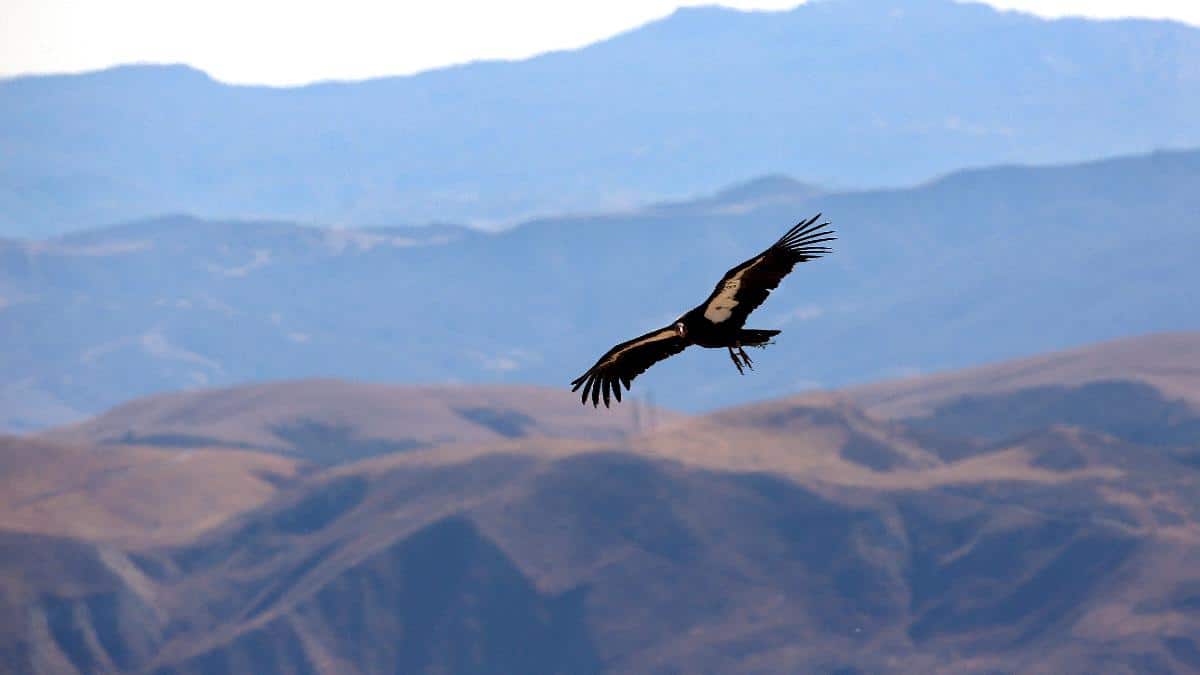

A female condor above the Hopper Mountain National Wildlife Refuge in Ventura County, California. Mel Melcon / Los Angeles Times via Getty Images
One environmental downside to wind turbines is their impact on birds.
The U.S. Fish and Wildlife Service (FWS) estimated that a median average of 234,012 birds were killed by land-based wind turbines a year as of 2017. While that number is far fewer than the 599 million killed by glass buildings and the 2.4 billion killed by cats, it is not nothing. Further, the American Bird Conservancy warns it could climb to five million a year if wind power increases to provide 35 percent of U.S. electricity.
Now, at least one wind energy company is trying to compensate for the damage it might cause. Avangrid Renewables is working with federal wildlife officials and the Oregon Zoo to breed endangered California condors to replace any that might be killed by its turbines, The Associated Press reported Monday.
“We see this as a win for condors,” Amy Parsons, Avangrid’s operations wildlife compliance manager, told The Guardian.
Specifically, Avangrid seeks to offset any damage done by its Manzana wind power project, a 126-turbine wind farm in the Tehachapi mountains northeast of Los Angeles. The turbines have 252-foot diameter blades, which might pose a threat to the birds that have a 9.5 foot wingspan.
The farm has been open since 2012, and since that time there are no records of any condors being killed there. However, the company estimates that as many as two adult condors with two chicks or eggs each may be killed by the turbines in the next 30 years, according to The Associated Press.
To offset this, the company will provide more than 0,000 in funding to breed six condors over three years at the Oregon Zoo’s Jonsson Center for Wildlife Conservation.
“We’re prepared to start this condor mitigation effort as early as this spring,” Oregon Zoo condor recovery lead Kelly Flaminio told The Associated Press. “Our zoo already nurtures the second-largest breeding population of condors in the nation.”
Once raised, the condors will then be released into the wild. California condors were nearly driven to extinction by the 1980s because of hunting, habitat loss and poisoning from lead bullets left in the animals they scavenged from, as EcoWatch reported previously. A breeding program has helped their populations to recover, however, and there are now more than 300 in the wild and 500 worldwide.
If no condors are killed by Avangrid’s turbines, then the wild population will simply increase by six, Flaminio told The Associated Press. However, some conservationists argue that the company’s plans do not go far enough.
The plan “should provide funding to raise a minimum of 30 condors to 1.5 years of age when they are released into the wild.” the Center for Biological Diversity wrote in comments to the FWS.
- Offshore Wind Power Is Ready to Boom. Here's What That Means for ...
- American Skyscrapers Kill an Estimated 600 Million Migratory Birds ...
- Wind Energy 101: Everything You Need to Know

 233k
233k  41k
41k  Subscribe
Subscribe 